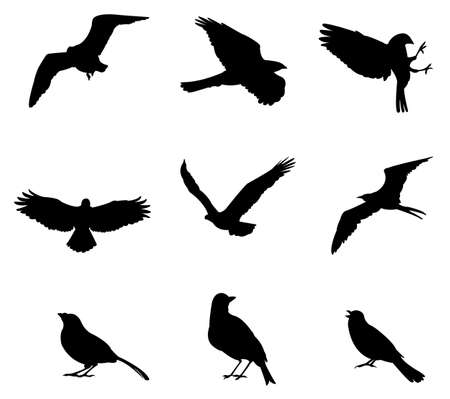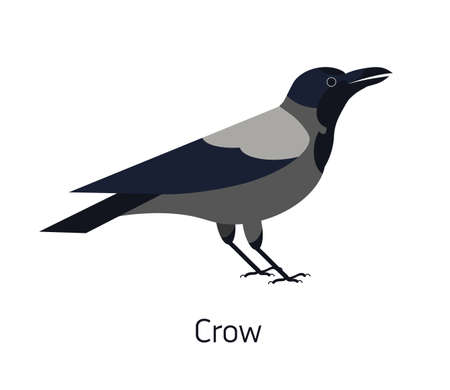1. Introduction to Bar Spacing
When choosing a cage for your pet bird, one of the most important factors to consider is bar spacing. The space between the bars might seem like a minor detail, but it plays a crucial role in ensuring your birds safety and comfort. Selecting the wrong bar spacing can lead to injuries, escape attempts, or even long-term stress for your feathered friend.
Why Bar Spacing Matters
Different bird species have varying sizes and behaviors, which means they require different cage designs. The right bar spacing prevents birds from getting their heads stuck, escaping, or feeling insecure inside their enclosure. If the bars are too wide apart, small birds may squeeze through and escape. On the other hand, if the bars are too close together, larger birds might feel confined and frustrated.
The Dangers of Improper Bar Spacing
Poorly chosen bar spacing can lead to several risks for pet birds:
- Injury Risk: Birds may get their heads, wings, or feet caught between bars that are too widely spaced.
- Escape Hazards: Small birds can slip through gaps if the spacing is too large.
- Stress and Anxiety: Birds that feel exposed due to wide gaps or overly confined due to tight spacing may experience unnecessary stress.
Recommended Bar Spacing for Different Bird Sizes
To help you choose the best cage for your pet bird, here’s a general guideline for bar spacing based on bird size:
| Bird Size | Common Species | Recommended Bar Spacing |
|---|---|---|
| Small | Finches, Canaries, Budgies | 1/4″ – 1/2″ |
| Medium | Cockatiels, Lovebirds, Conures | 1/2″ – 5/8″ |
| Large | African Greys, Amazons | 3/4″ – 1″ |
| X-Large | Macaws, Cockatoos | 1″ – 1.5″ |
The Importance of Choosing the Right Cage
Selecting a cage with appropriate bar spacing ensures that your bird remains safe and comfortable in its environment. A well-chosen cage allows your bird to climb, play, and rest without risk of injury or escape. In the next sections, we will explore how different bird species have unique needs when it comes to cage design and bar spacing.
2. Understanding the Needs of Different Bird Species
When choosing a cage for your feathered friend, bar spacing is one of the most crucial factors to consider. Different bird species vary in size, beak strength, and behavior, all of which influence the ideal bar spacing for their cages. Selecting the right spacing ensures their safety, comfort, and well-being.
Size Matters: Small vs. Large Birds
Birds come in various sizes, from tiny finches to large macaws. The spacing between the bars should be narrow enough to prevent smaller birds from squeezing through or getting stuck but wide enough to allow them to climb and move freely.
| Bird Size | Common Species | Recommended Bar Spacing |
|---|---|---|
| Small Birds | Finches, Canaries, Budgies | 3/8″ – 1/2″ |
| Medium Birds | Cockatiels, Lovebirds, Conures | 1/2″ – 3/4″ |
| Large Birds | African Greys, Amazons, Macaws | 3/4″ – 1.5″ |
The Role of Beak Strength in Bar Spacing
A birds beak is a powerful tool used for climbing, chewing, and manipulating objects. Some species, like parrots, have incredibly strong beaks that can bend or break weak cage bars. Ensuring the bars are sturdy enough to withstand their strength is essential.
- Bigger beaks: Larger parrots like macaws need thicker bars that won’t bend or break under pressure.
- Softer beaks: Smaller birds such as finches don’t require heavy-duty bars but still need secure spacing to prevent escapes.
The Impact of Bird Behavior on Cage Selection
Birds have different activity levels and behaviors that affect their interaction with cage bars.
Climbers vs. Perchers
Certain birds, like parakeets and lovebirds, love to climb their cage bars. These birds benefit from horizontal bars that provide easy grip and movement.
Bite-Prone vs. Gentle Birds
If your bird is known for biting or chewing aggressively (such as cockatoos), opt for cages with thicker metal bars that resist damage.
Selecting the correct bar spacing based on your birds size, strength, and behavior helps create a safe and comfortable living space. Understanding these factors allows you to provide an environment where your bird can thrive without the risk of injury or escape.

3. Risks of Improper Bar Spacing
Choosing the right bar spacing for your bird’s cage is not just about comfort—it’s about safety. Bars that are too widely spaced or too close together can create serious risks for your feathered friend. Here are some potential dangers to consider.
Escape Risks
Birds are naturally curious and love to explore their surroundings. If the bars on their cage are too widely spaced, smaller birds can slip through and escape. This is especially dangerous in households with other pets, open windows, or other hazards.
Injury Concerns
Improper bar spacing can also lead to injuries. Birds may get their heads, wings, or feet stuck between bars that are too wide or too narrow. This can cause panic, broken bones, or even fatal injuries if they struggle to free themselves.
Stress and Anxiety
A bird’s cage should be a safe and secure environment. When bar spacing is incorrect, birds may feel insecure, leading to increased stress levels. A stressed bird may develop behavioral issues such as excessive screaming, feather plucking, or aggression.
Common Risks Based on Bar Spacing Issues
| Bar Spacing Issue | Potential Risk |
|---|---|
| Too Wide | Escape risk, head/wing entrapment, injury from falls |
| Too Narrow | Beak/foot trapping, difficulty climbing, stress from restricted movement |
How to Prevent These Risks
- Always check recommended bar spacing for your birds species before purchasing a cage.
- Observe your bird in its cage to ensure it cannot squeeze through or get stuck between bars.
- If you notice signs of stress or injury, consider adjusting the cage setup or switching to a more suitable design.
By choosing the correct bar spacing for your bird’s size and species, you can help prevent these risks and provide a safe and comfortable home for your pet.
4. Recommended Bar Spacing by Bird Size
Choosing the right bar spacing for your bird’s cage is crucial to their safety and comfort. If the bars are too wide, smaller birds can squeeze through or get stuck, leading to serious injuries. On the other hand, if the bars are too close together, larger birds might feel confined or unable to climb properly. Below are general guidelines for different bird sizes to help you select the appropriate cage.
Optimal Bar Spacing for Small Birds
Small birds, such as finches and budgies, require narrow bar spacing to prevent them from slipping through or getting their heads stuck. A spacing of ⅜ inch (0.95 cm) to ½ inch (1.27 cm) is ideal for these tiny feathered friends.
Optimal Bar Spacing for Medium Birds
Medium-sized birds, including cockatiels and conures, need slightly wider bar spacing than smaller birds but still require enough security to prevent escape or injury. A spacing of ½ inch (1.27 cm) to ¾ inch (1.9 cm) works best for most medium species.
Optimal Bar Spacing for Large Birds
Larger parrots like macaws and African greys need sturdy cages with wider bar spacing that accommodates their size while still keeping them safe. For these birds, a spacing of ¾ inch (1.9 cm) to 1 ½ inches (3.8 cm) is generally recommended.
Quick Reference Table for Bar Spacing
| Bird Size | Examples | Recommended Bar Spacing |
|---|---|---|
| Small | Finches, Budgies | ⅜” – ½” (0.95 – 1.27 cm) |
| Medium | Cockatiels, Conures | ½” – ¾” (1.27 – 1.9 cm) |
| Large | African Greys, Macaws | ¾” – 1 ½” (1.9 – 3.8 cm) |
The Importance of Choosing the Right Bar Spacing
Selecting the proper bar spacing ensures that your bird stays safe and comfortable in its cage. Too wide, and there’s a risk of injury; too narrow, and your bird may feel restricted in movement. Always consider your bird’s size and species before purchasing a cage to provide them with the best living environment possible.
5. Choosing the Right Cage for Your Bird
Selecting the right cage for your pet bird is crucial to ensuring its safety, comfort, and well-being. Bar spacing plays a significant role in preventing injuries and providing an appropriate environment for different bird species. In addition to bar spacing, you should also consider the material and structure of the cage.
Bar Spacing Guidelines for Different Bird Sizes
Choosing the correct bar spacing helps prevent birds from getting their heads or bodies stuck between bars. Here’s a general guide:
| Bird Size | Recommended Bar Spacing |
|---|---|
| Small Birds (e.g., Finches, Canaries, Budgies) | 1/4″ to 1/2″ |
| Medium Birds (e.g., Cockatiels, Lovebirds, Conures) | 1/2″ to 3/4″ |
| Large Birds (e.g., African Greys, Amazons, Macaws) | 3/4″ to 1.5″ |
Cage Material: Durability and Safety
The material of the cage affects its longevity and your bird’s health. Consider these options:
- Stainless Steel: Highly durable, rust-resistant, and safe for birds.
- Powder-Coated Metal: More affordable than stainless steel but should be lead- and zinc-free to avoid toxicity.
- Acrylic Cages: Provide good visibility but may not allow enough airflow.
- Wooden Cages: Generally not recommended as birds can chew through them easily.
Cage Structure: Comfort and Accessibility
A well-structured cage provides your bird with enough space to move around comfortably. Key factors to consider:
- Cage Size: Ensure there is ample room for your bird to stretch its wings and climb.
- Horizontal Bars: Ideal for climbing species like parakeets and conures.
- Swing-Out Feeder Doors: Makes feeding more convenient while minimizing stress on the bird.
- A Removable Tray: Helps with easy cleaning to maintain hygiene.
A Safe and Comfortable Home for Your Bird
Selecting a cage with proper bar spacing, sturdy materials, and a functional structure will ensure a safe and comfortable home for your pet bird. By taking these factors into account, you can provide an environment where your feathered friend feels secure and happy.


